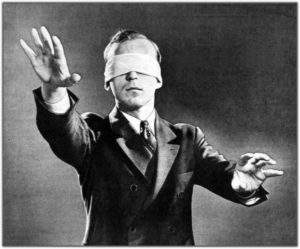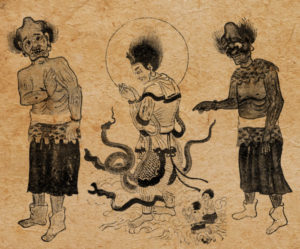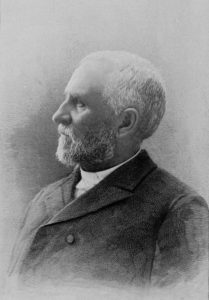Feb
10
Western Problems in Identifying Demonic Activity
“Put on the full armor of God so that you can stand against the tactics of the Devil. For our battle is not against flesh and blood, but against the rulers, against the authorities, against the world powers of this darkness, against the spiritual forces of evil in the heavens.” — Eph. 6:11-12 (HCSB)
Late last year, I published a couple articles (“Witchcraft and Satanism in the Middle Ages through 20th Century” and “Reasons for Occult Revival in the Western World”) that excerpted a chapter of the 1976 book Demon Possession, ed. by John Warwick Montgomery. This week I’d like to share an excerpt from a different contributor to the book, W. Stanley Mooneyham, former President of World Vision International, in which he addresses “Demonism on the Mission Field: Problems of Communicating a Difficult Phenomenon”.
Mooneyham cites several examples of, or comments on, demonism from across Africa, Asia, and Latin America. Then, he makes the following observations:
—
 “Despite the ten illustrations given above, which I regard as credible, there is considerable difficulty in obtaining accurate information about demon activity unless a reliable person is actually an eyewitness. Details often come at second or third hand. They may be supplied by someone unfamiliar with demonism or without Christian perspective. They may be reported only partially, without giving the cultural context. They may come from someone whose aim is personal gain or notoriety, or who simply likes a good story.
“Despite the ten illustrations given above, which I regard as credible, there is considerable difficulty in obtaining accurate information about demon activity unless a reliable person is actually an eyewitness. Details often come at second or third hand. They may be supplied by someone unfamiliar with demonism or without Christian perspective. They may be reported only partially, without giving the cultural context. They may come from someone whose aim is personal gain or notoriety, or who simply likes a good story.
From this it becomes apparent that, in more than one sense, some spirit-discerning is called for. It is not unknown for individuals to simulate the symptoms of those who are ‘possessed’ and, by alleged communication with spirits, make a tidy living as fortune-tellers or healers. Embellishment and deception are part of human life as a whole, and the serious investigator will not be put off by bogus operators, nor will he fall into the trap of assuming that because we cannot take everything literally we cannot take it seriously.
There are other obstacles to getting at the truth of demon activity. In China during the latter part of the nineteenth century, medical missionary Dr. J.L. Nevius found that to have a case of spirit possession in a family was usually regarded not only as a great misfortune, but as a disgrace, just as leprosy is in some areas today. To tell a foreigner about a neighbor’s demon possession would incur not only the resentment of the neighbor, but the vengeance of the demon. And, of course, there is the continuing barrier in all generations and among all peoples about speaking of personal and domestic matters with foreigners.
But there is a difficulty more fundamental about demonism, especially for the first-term missionary. For Westerners, demon activity is something alien. For a major part of the world, on the other hand, including the great ethnic faiths of Asia and the animistic religions of Africa and South America, demonism is a natural part of life in which there is no dichotomy between material and spiritual, no division into rational and nonrational.
Westerners have often scoffed at occult matters — and many of them still do. Because of this, we may note in passing, African students who went to study in Britain would seldom speak of their fears — or their knowledge — openly. Such Western denial of part of another’s heritage does nothing for the establishment of rapport with those who come from regions where a man gives traditional respect to the religious feelings of his neighbor.
In my own experience traveling overseas, I have never personally come across demon possession that I could recognize. I have, however, many times been conscious of spiritual battles, where the presence of evil was very real, and I was conscious that a spiritual conflict was taking place.
I am sure that had I had a different cultural background and different ‘eyes’ for perceiving the world, I might have seen the visible manifestations of this demonic activity. My technology-oriented, rationalistic, Western culture simply prevented me from seeing what the people of other cultures see and experience in a more tangible way.
Ironically, my only definite encounter with demon possession was here in the United States. I was in a counseling session with a lady and, even with my knowledge of how demon powers operate, I didn’t recognize that demons might be involved. She had been to psychiatrists, had been in mental institutions, and I just did not consider the possibility of demonism, although I kept sensing, in some nonverbal way, that something was wrong. It was only some time later, when she came back and told me of her complete deliverance from demons, that I learned what the situation had been. Then things made sense. And in her case, the change of personality was dramatic. No longer was there the wild look of terror in her eyes; she had become poised, relaxed and attractive. Here again, I feel that my cultural orientation prevented me from clearly recognizing demon activity. And I think this is often true for missionaries and observers from the Western world.
The Western missionary inevitably carries with him his own culture and his own prejudices, conscious or unconscious. Coupled with youthful enthusiasm, these attitudes might add up to a new broom sweeping away the garbage of centuries — with no thought that it could perhaps be sifted and recycled. It has taken us a long time to learn that people must be dealt with according to their situation and environment. Missions were often founded on bases reflected in their valedictory hymns: ‘Far, far away, in heathen darkness dwelling…/The heathen in his blindness bows down to wood and stone.’ And of course it was true. The danger lay rather in the side effects that encouraged a certain arrogance toward indigenous culture, including the belief that the savage mind was utterly devoid of truly religious thoughts.
‘I brought with me to China,’ wrote Dr. Nevius, ‘a strong conviction that a belief in demons, and communications with spiritual beings, belongs exclusively to a barbarous and superstitious age, and at present can consist only with mental weakness and want of culture.’ When Nevius and his colleagues first encountered demon possession, they attributed it to fear or hallucination or epilepsy — assumptions still not infrequently made. The fact that they are frequently also true points to a significant principle: a diagnosis of demonism should be preceded by the elimination of every other explanation. Or, if you know your Sherlock Holmes, you will remember his rhetorical question: ‘How often have I said to you that when you have eliminated the impossible, whatever remains, however improbable, must be the truth?’
Where indigenous beliefs about demonism were condemned out of hand by missionaries, as in parts of Africa, there was a predictable reaction. As Dr. Reyburn has pointed out, the African spirit world went underground. African converts to Christianity were understandably bewildered by the missionary’s summary rejection of a whole dimension of life. Did he not, after all, teach about a Holy Spirit, and an evil spirit that pulled the other way? So the missionary’s testimony is damaged. Dr. Loewen, in an unpublished paper, suggests why this is, in a concise summary of how the African might see the missionary’s life:
He reads the Bible and preaches about evil spirits and the Spirit of God, but when you suggest that a certain person has fever spirits, he resolutely says, ‘No, that is malaria! That does not come from a spirit, it comes from a mosquito bite!’ Missionaries speak long, loud, and emphatically about the need of being led by the Spirit; but again and again, when members of the indigenous church feel the Holy Spirit’s leading in one direction, the missionary’s decisions go in another direction. So what do you believe? What the missionary says or the way he lives? Furthermore, since the missionary usually controls the purse strings, national believers have found that it pays to listen to the missionary….
There is no need to underline the dangers inherent in that line of thought, with its parallels with the ‘rice Christians’ of another continent. An added danger is that the whole question of evil spirits may remain just beneath the surface, never brought into the light of day for the sort of open discussion that would benefit all parties, except the devil who thrives on secrecy — and perhaps make symposia like this one unnecessary. Some missionaries, unfortunately, do not possess the scientist’s or the journalist’s faculty of curiosity. Some may feel secretly appalled at the prospect of precipitating a situation with which they may not be able to cope (and if they have doubts, they won’t cope). Satan and his emissaries must be defeated, not ignored.
At the same time a balance must be maintained. It is possible to develop an unhealthy preoccupation with the demonic and thereby lose sight of the fact that it is only one facet of the diabolic strategy. At one of the group discussions at the Lausanne Congress, someone suggested as a guideline: ‘Never go looking for demons, but if one appears under your feet, tread on it!’….
Both those who must deal firsthand with demon activity and those who read about it from a distance need to continually pray for a scriptural and balanced perspective. Let me summarize three considerations which would apply to persons in either category: (1) We must constantly remind ourselves of the need to appreciate the vast differences between Western and non-Western cultures. We may strive to speak in common terms, but we are looking at the same phenomena from widely divergent perspectives. People of other cultures will perceive these matters far differently than ourselves. (2) We must realize and appreciate that spirit activity is a natural and accepted (though often feared) part of daily life in many cultures. This realization should caution us against casual dismissal of the reports and views of fellow Christians from these cultures. (3) We must challenge, with a sanctified skepticism, reports of demon activity which lack detail, which are second- or third-hand reports, and which are sensationalistic in tone and presentation. Headlines and theater marquees which promise titillation about demons may flatter Satan and feed sensation-seekers, but they do little to warn or edify concerning the desperately serious business carried on by the ‘prince of darkness.’…
Of two things we can be sure. First (I have said this before but it bears repeating), demonism on the mission field, demonism everywhere, is but one manifestation of the devil’s activity on earth. Second, that activity is doomed ultimately to failure because of a Greater One to whom alone belongs not only the kingdom and the glory, but the power.”
—
Sound advice, I’d say. We can neither afford to over- nor under-estimate the extent or seriousness of demonic activity in the world in its many forms. A cautious and balanced approach that acknowledges the need to recognize our own cultural lenses would seem to be best.


















